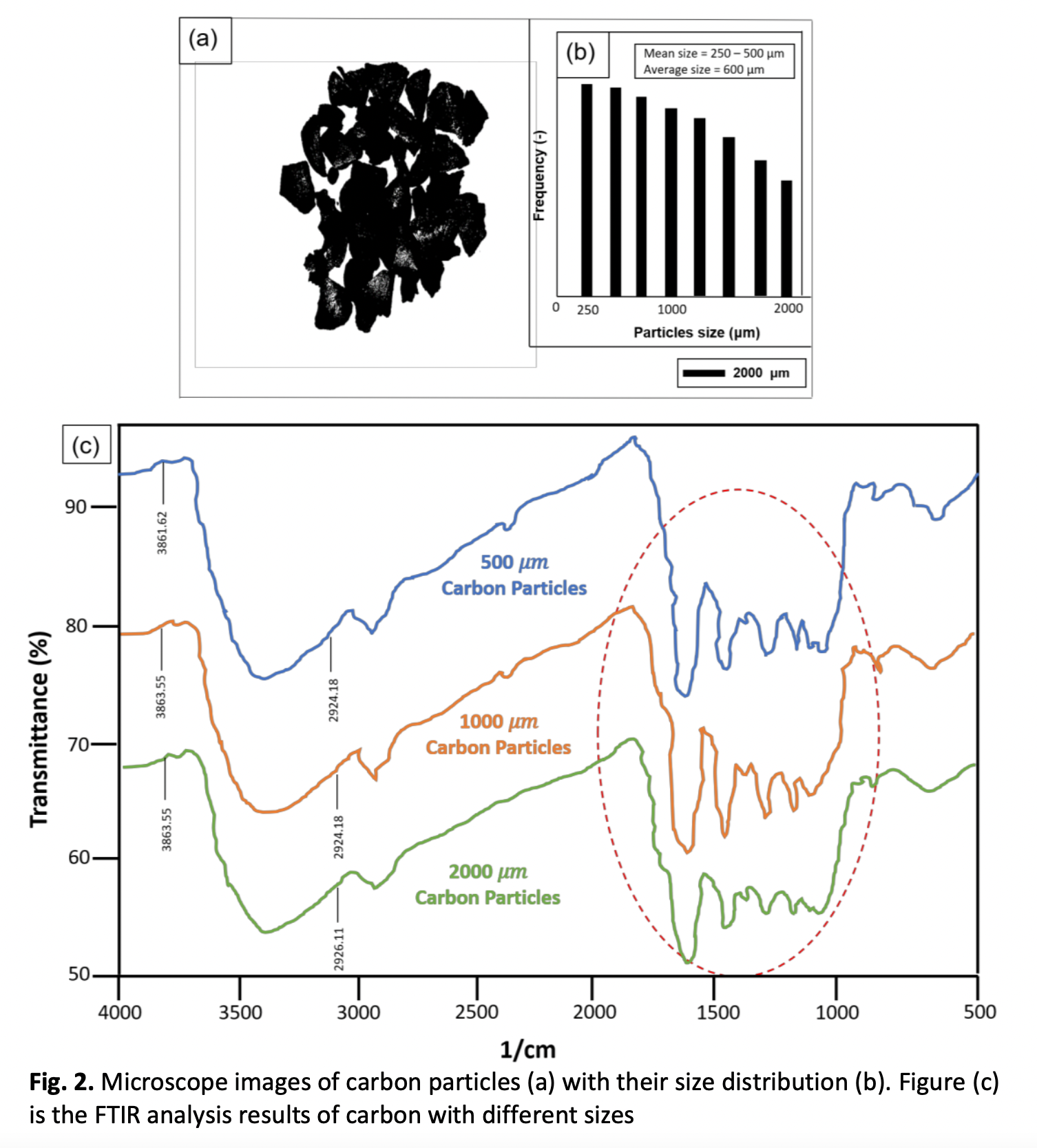Sustainable Biochar Carbon Microparticles Based on Mangosteen Peel as Biosorbent for Dye Removal: Theoretical Review, Modelling, and Adsorption Isotherm Characteristics
DOI:
https://doi.org/10.37934/arfmts.105.1.4158Keywords:
Carbon, isotherm adsorption, mangosteen peel, particle size, Sustainable Development Goals (SDGs), BiocharAbstract
Environmental problems and global energy demand increase every day. The quality of water and sanitation is a very hot topic of discussion. The principles of sustainable development (SDGs) by utilizing renewable materials need to be applied to overcome this problem. One way is through the use of agricultural waste as a renewable carbon material. The study aims to analyze the adsorption characteristics of sustainable carbon microparticles based on mangosteen peel for dye removal. This study also evaluates adsorption isotherms based on its microparticle size effects. In short, carbon preparation was started by mangosteen peel carbonization at 250˚C for 5 hours and tested using sieves (i.e., 125, 250, 500, 1000, and 2000 μm) to obtain a certain size of carbon. Adsorption was evaluated based on a specific particle size using a batch adsorption reactor. Curcumin was used as a model organic dye. The findings showed that particle sizes influence physical adsorption with repulsive interactions between adsorbates. Adsorption in the large particles (i.e. 2000 and 1000 μm) occurs in the multilayer adsorption process with pore filling, while that in the small particles (i.e., 500 μm) occurs in the monolayer adsorption process with pore filling. Small-sized carbon does not provide enough active sites (such as the absence of a pore structure on the surface) for the adsorbate, leading to the creation of a monolayer during adsorption. Meanwhile, in large-sized carbon, the pore-filling mechanism in the adsorbent surface cause the formation of multilayer adsorption. This research is important to understand the application of adsorption using agricultural waste-based adsorbents by observing the phenomena occurring during the adsorption process.
Downloads

































